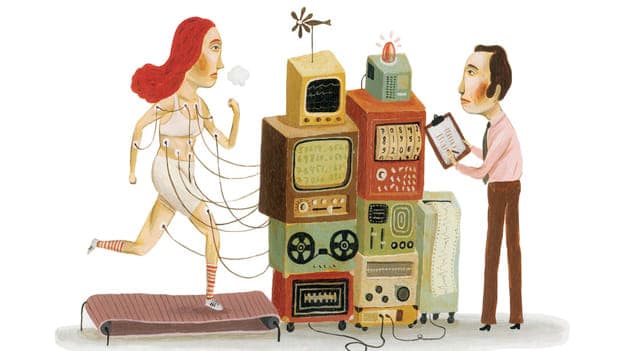How to cultivate organizational wellness

An employee spends the majority of their day at the workplace, which makes it extremely important to create a workplace atmosphere that supports both productivity and health. Thus, organizational wellness is a concept that promotes the integration of work and health, and it aims to strike a balance between both.
Today, most organizations portray that they care for their employees, but in reality, their health programs are just like any other tick-in-the-box health initiative. Most organizations do not genuinely care about their employees when they are sick and stop viewing them as assets. There are very few organizations that genuinely care and invest money in real activities and programs that actually benefit employees. If you want to one of these organizations, but are struggling to put together a holistic health program in place, here are a few things to consider:
Nutrition
Employees end up eating more than one meal a day at the workplace, which gives employers a chance to encourage healthy eating habits by increasing awareness and accessibility to healthy food options. Organizations can add clean snacking options to vending machines, keep fresh fruits available at the snack counter, swap sugar with jaggery while serving tea and coffee.
It’s also common to see instant coffee and tea vending machines in office setups, which makes it very easy for a person to over-consume coffee (and sugar) because it is available at the click of a button. Instead, companies must install infused waters or simply an infusion of lemon and mint for employees to consume all through the day.
Employers must also educate their staff on the importance of a balanced diet and may also organize informative events such as talks by nutritionists. Basic changes in the quality of oil (from refined to cold-pressed), salt (from white table salt to pink salt or rock salt), sweetening agent (from sugar to jaggery or honey), and other raw materials that go into making their meals must also be taken into consideration.
Physical health
Most jobs are sedentary, and people stay chained to their desk from the bigger part of the day. This is a major contributing factor to spine and neck issues, weight gain, sciatica, poor blood circulation, stiff shoulders, etc. Even though employees might indulge in their own fitness regimes, if they are sedentary while they are at work, they are called sedentary-active. This means the one-hour gym/walk/yoga or any fitness activity is useless if they find themselves sitting through the day. Thus, there is considerable scope to infuse organizational wellness via physical activity, especially in companies that have desk jobs.
It doesn’t need significant investment to organize walking and exercise activities. Employers should encourage their staff to take every opportunity to get active. They can arrange a variety of physical activities tailored to every level of fitness, such as lunchtime runs, “step challenges” or lunchtime yoga, etc. They could have a culture of taking the stairs instead of the elevator. Workout floors could be installed within the campus for individuals to workout, do a TABATA, squats, planks, etc. A trampoline can be added as well, and group workout sessions can be organized. A community spirit may also encourage employees to get involved in marathons and cycle rallies, and may motivate the staff to set health goals and improve their physical health.
Mental health
In most organizations, mental health challenges are often present but are not acknowledged, and not addressing these issues can can aggravate them over time. No matter the job description, every employee faces some pressure to meet deadlines and expectations, plus problems that extend from home to work. Some employees work to support themselves and their family, which in itself can create stress.
As part of mental wellness initiative, companies must also invest in the mental health of their employees through workshops, talks, yoga, and meditation classes. Employees should have a space for safe communication to express and release any negative emotions that they might be going through. As key players of an organization, managers should regularly check in with all team members on their mental well-being. Since mental health is closely related to work-life balance, job satisfaction, and emotional well-being, employers must ensure that their workforce is doing well on all these fronts.
Another critical wellness initiative is the provision of Employee Assistance Programmes (EAP). Many employees are unaware of the comprehensive services that are offered by EAP, which are generally available 24 hours a day, seven days a week, and are accessible by phone, email, and online. They are usually designed to cover a wide range of issues, including work, family, and personal issues. Employers should invite their EAP provider to educate employees on what services are covered by the EAP. Details of the EAP should be provided to employees regularly, and management should speak openly with employees about the benefits of participating in such a program.
An increasing number of organizations are trying to bring focus on organizational wellness, but they remain in the minority. Most organizations wrongly assume that ensuring the mental, physical, and emotional well-being of their workforce is a capital-intensive exercise. Tending to small, but significant issues, like choosing the right kind of food served in canteens, to organizing exercise and workout sessions, yoga, meditation, regular health check-ups, can make a world of a difference in the wellness of employees. And we already know that health and productivity go hand and hand. To increase efficiency and productivity of the organization, leaders must ensure that each and every employee’s health is taken care of.










